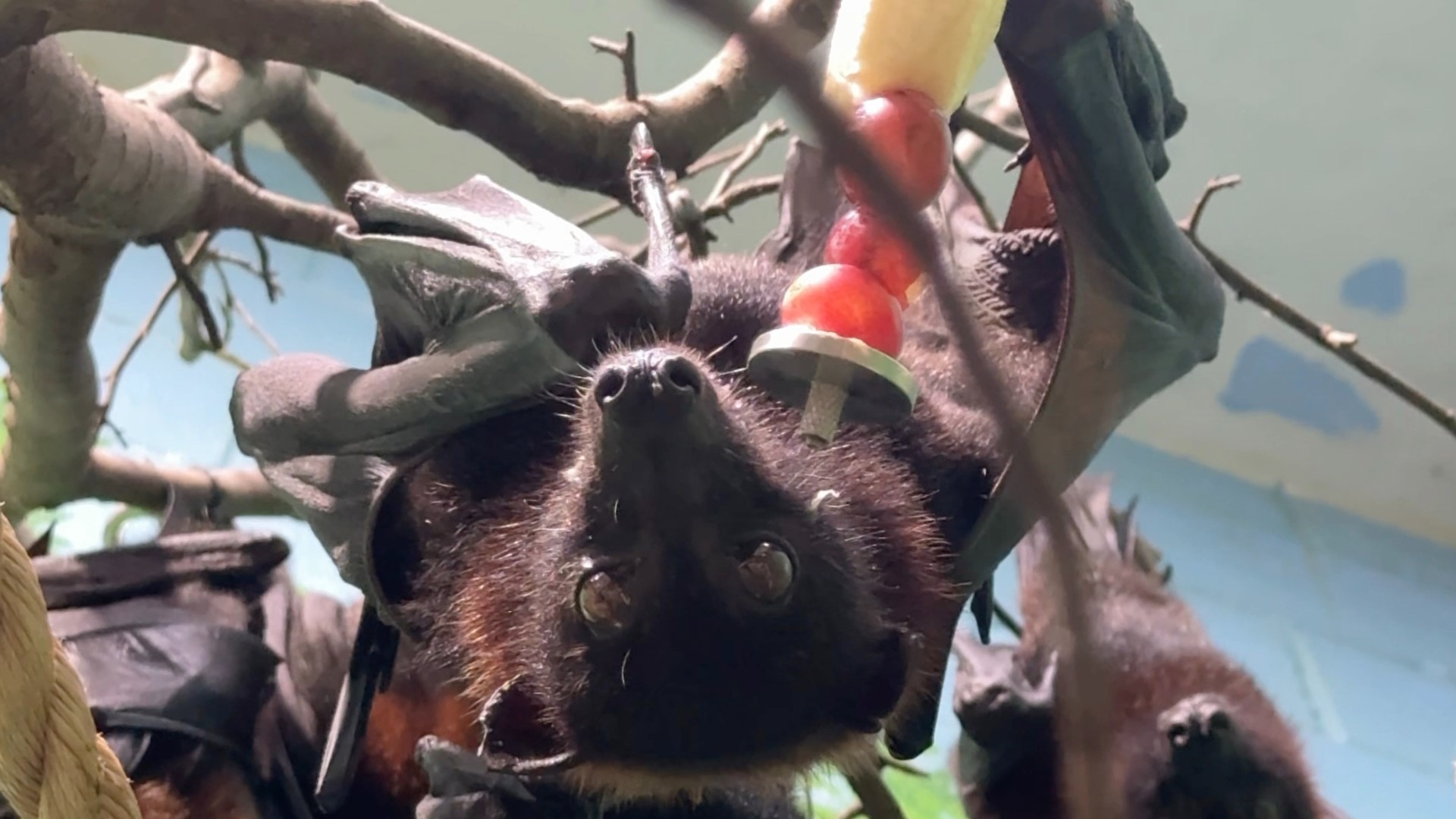SAN ANTONIO — The zoo is welcoming a colony of flying foxes back after being gone since the 1980s.
The seven boys, Rufio, Bruce, Guapo, Homer, Count, Mickey, and Yoda, and 11 girls all have unique names that reflect their individuality and charm. The females are named Stella, Esther, Ady, Penny, Leila, Rosa, Jasmine, Marla, Sweet Pea, Fern, and Snapdragon.
The group of Large Flying Foxes or Malayan Flying Foxes (Pteropus vampyrus), will be relocated from Zoo Tampa and their new habitat will be next to the tree-kangaroos.
The Malayan Flying Fox is native to Southeast Asia, and is one of the largest bat species in the world, boasting an impressive wingspan of up to 5 ½ feet wide and an average weight of two pounds.
They like to roost in trees during the day and then take off on nightly flights to reach their feeding grounds.
The zoo says they play a crucial role as seed dispersers and pollinators of forest trees, feeding on flowers, nectar, and fruit.
They are very social creatures and can form feeding groups of up to 50 individuals and roosting colonies that can be even larger.
"Having flying foxes back at San Antonio Zoo is a significant milestone for us and yet another reason to visit the zoo in 2024," said Tim Morrow, President & CEO of San Antonio Zoo. "Not only will visitors have the extraordinary opportunity to witness these magnificent giants up close, but they will also learn about the importance of conservation efforts to protect endangered species like the Large Flying Fox."
The Malayan Flying Fox is classified as endangered on the IUCN Red List, which emphasizes the importance of their presence in zoos for conservation and education purposes.
"The head of the species resembles that of a small fox, with distinct features such as long and pointed ears and sharp curved claws—additionally, the large, well-developed eyes of the Flying Fox aid in their flight navigation," said the San Antonio Zoo.
Interesting to note that one male leads a small harem of females, and birthing occurs synchronously. Their offspring are usually born between March and May, and are typically solo births and suckle for two to three months before becoming nearly mature after three to four months.
Contrary to their scientific name, Malayan Flying Foxes are not vampire bats but are fruit-eaters.
For more information, visit the zoo's website.
Learn more about KENS 5:
Since going on the air in 1950, KENS 5 has strived to be the best, most trusted news and entertainment source for generations of San Antonians.
KENS 5 has brought numerous firsts to South Texas television, including being the first local station with a helicopter, the first with its own Doppler radar and the first to air a local morning news program.
Over the years, KENS 5 has worked to transform local news. Our cameras have been the lens bringing history into local viewers' homes. We're proud of our legacy as we serve San Antonians today.
Today, KENS 5 continues to set the standard in local broadcasting and is recognized by its peers for excellence and innovation. The KENS 5 News team focuses on stories that really matter to our community.
You can find KENS 5 in more places than ever before, including KENS5.com, the KENS 5 app, the KENS 5 YouTube channel, KENS 5's Roku and Fire TV apps, and across social media on Facebook, Twitter, Instagram and more!
Want to get in touch with someone at KENS 5? You can send a message using our Contacts page or email one of our team members.

